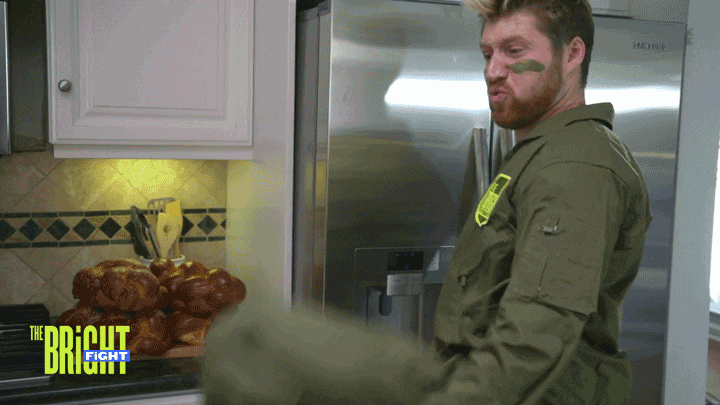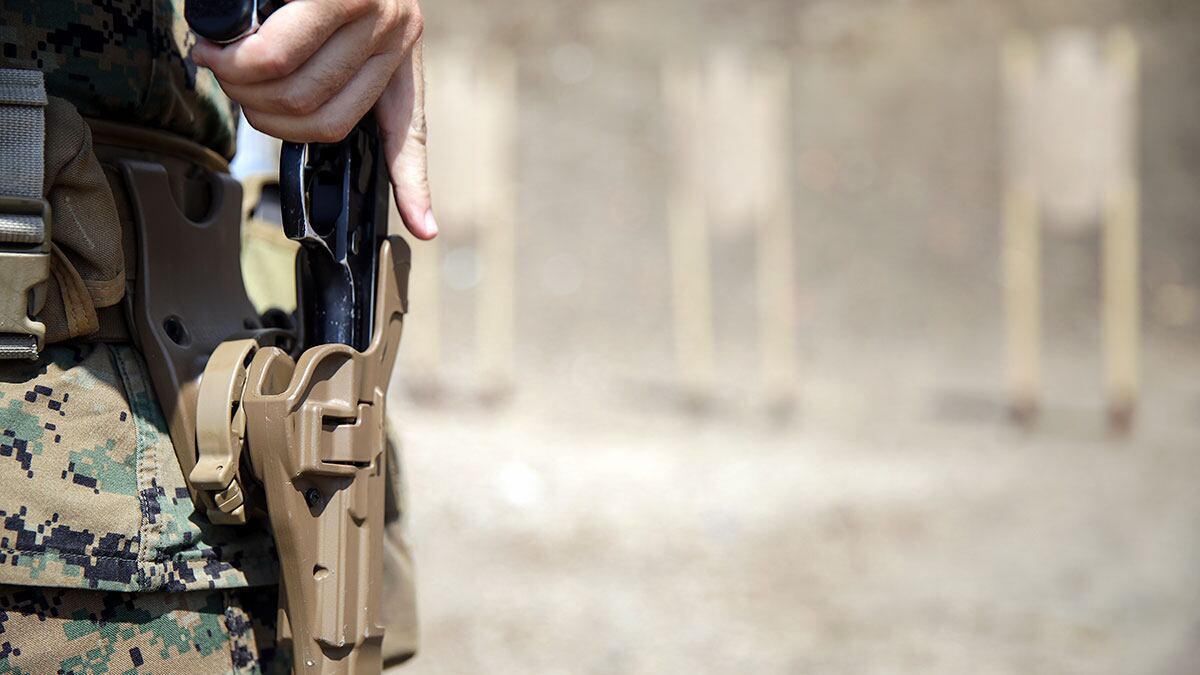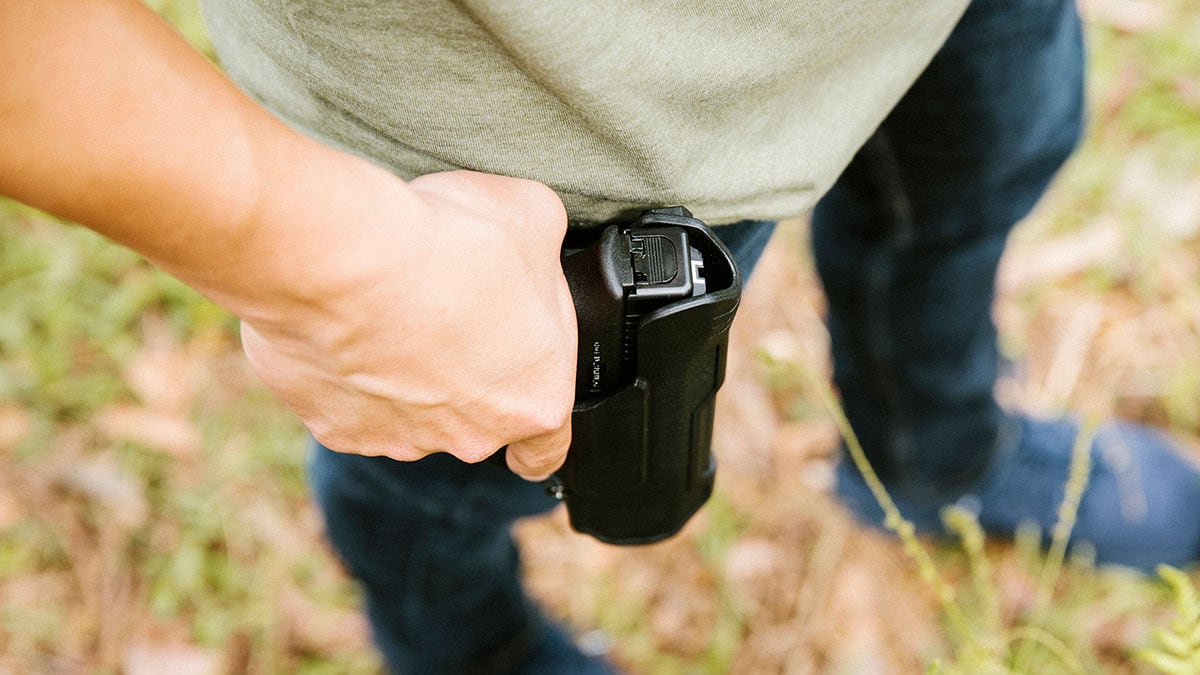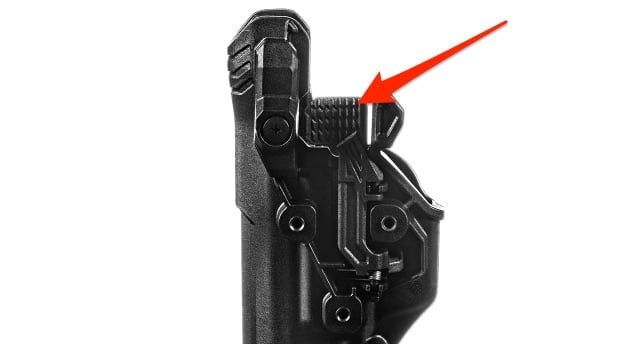Love 'em or hate 'em, there’s probably a 99.9 percent chance you’ll be required to wear a retention holster if you’re on duty — whether it’s in the military, law enforcement or just some random security detail.
And there are darn good reasons for that. Keeping your blaster out of a bad guy’s hands?
Check.
Gluing that handgun to your hip while you’re doing ninja moves?
A-Firm.

And though 99.9 percent of you have to use retention holsters on duty, 99.8 percent of you probably draw your weapon slower with them.
No, we can’t all be John Wick, but fumbling for that paddle, release ... whatever ... can take that extra second that could put you on your heals.
For many years one of the leaders in this world was Blackhawk. Ever heard of the Serpa holster? (Ever showed up at an IDPA match with one? Tell us what the RO said about that move)
Sure you have — especially those of you in the US military (hello Leathernecks).

It was a revolutionary system that used a release button along the line of your trigger finger index. Seemed to work great, so many units bought them.
But when the troops headed over to the sandbox in the early 2000s, problems started cropping up.
Sand gunking the release mechanism, causing total lockups. Folks who didn’t do enough reps on the holster to draw efficiently (and quickly) when the sh&t hit the fan. Fear of inadvertent discharge with that trigger finger activation.
The hate started coming and BH took a lot of flak.
But several years later the company went back to the drawing board, revamped the design and just released its new and improved Level 2 and Level 3 retention holster.
Say hello to the T-Series.
"T" for “thumb," that is.
Using new internal components and a brand new release design, the T-Series — in both Level 2 and Level 3 (with a retention strap) — intends to face the problems of the old Serpa head on. To activate the release mechanism, the shooter exerts pressure on a thumb release as part of the normal draw stroke.

No more finger along the trigger line risking an ND.
“The T-Series reinforces the Master Grip Principle, which helps to ensure that you’re ready to engage under even the most stressful situations," Blackhawk says. “The design takes takes advantage of economy of motion, delivering tremendous advantage to the end user.”
Blackhawk says the new T-Series — so far only available for the Glock 17 — is made of more durable polymer material and uses “dual-shot molding technology” to make the draw quieter.
Additionally, according to Paul Smith, Blackhawk senior design engineer who took the lead on the T-Series, the holster has a newly designed coil spring that is impervious to fouling from sand or dirt.
“There’s no room in the spring for jamming,” Smith says.

About 400 rounds later — through a withering flurry of draw-holster-draw drills with a mean-as-hell former Marine ninja instructor — about 90 percent of the time I got the G17 out, on target and a hole in paper no problem. All other instances were just delays in getting my hand in the proper draw stroke position or fumbling too fast on the clock.
Having played around with a Serpa a few times, the T-Series seems a heckuva lot easier to deploy and safer to engage — particularly for a potential semi-experienced shooter who pulls typically during range quals.
And for those diehard Serpa fans, that blaster holder will still be around.
Will the T-Series bury the Serpa’s controversial legacy and yank Blackhawk back into retention Nirvana? It’s unclear. But spend a little time with the T, and it’s pretty clear the company took a new approach to an old problem in a novel way.
Christian Lowe is senior editor for digital operations and is a competitive pistol and rifle shooter.





